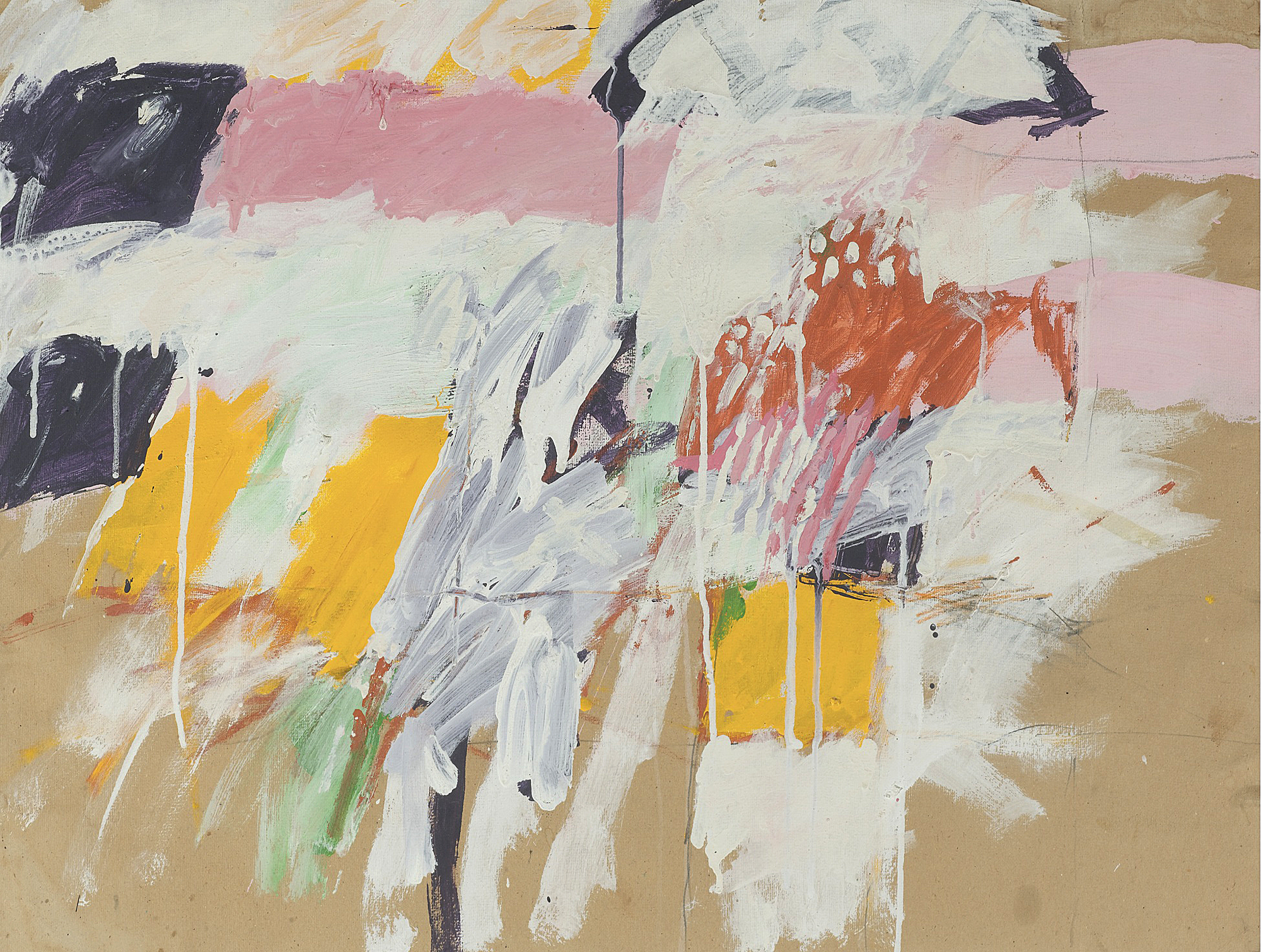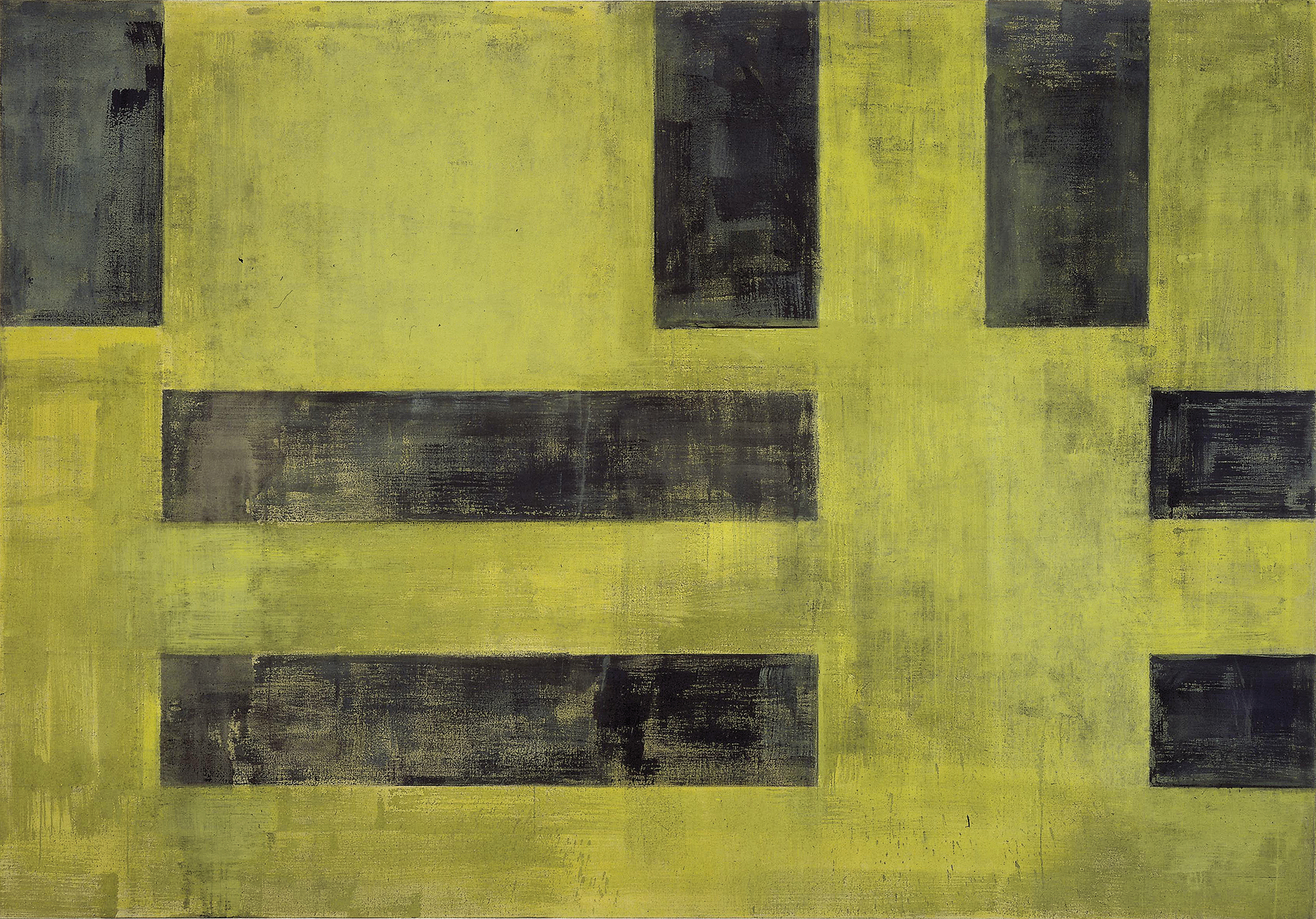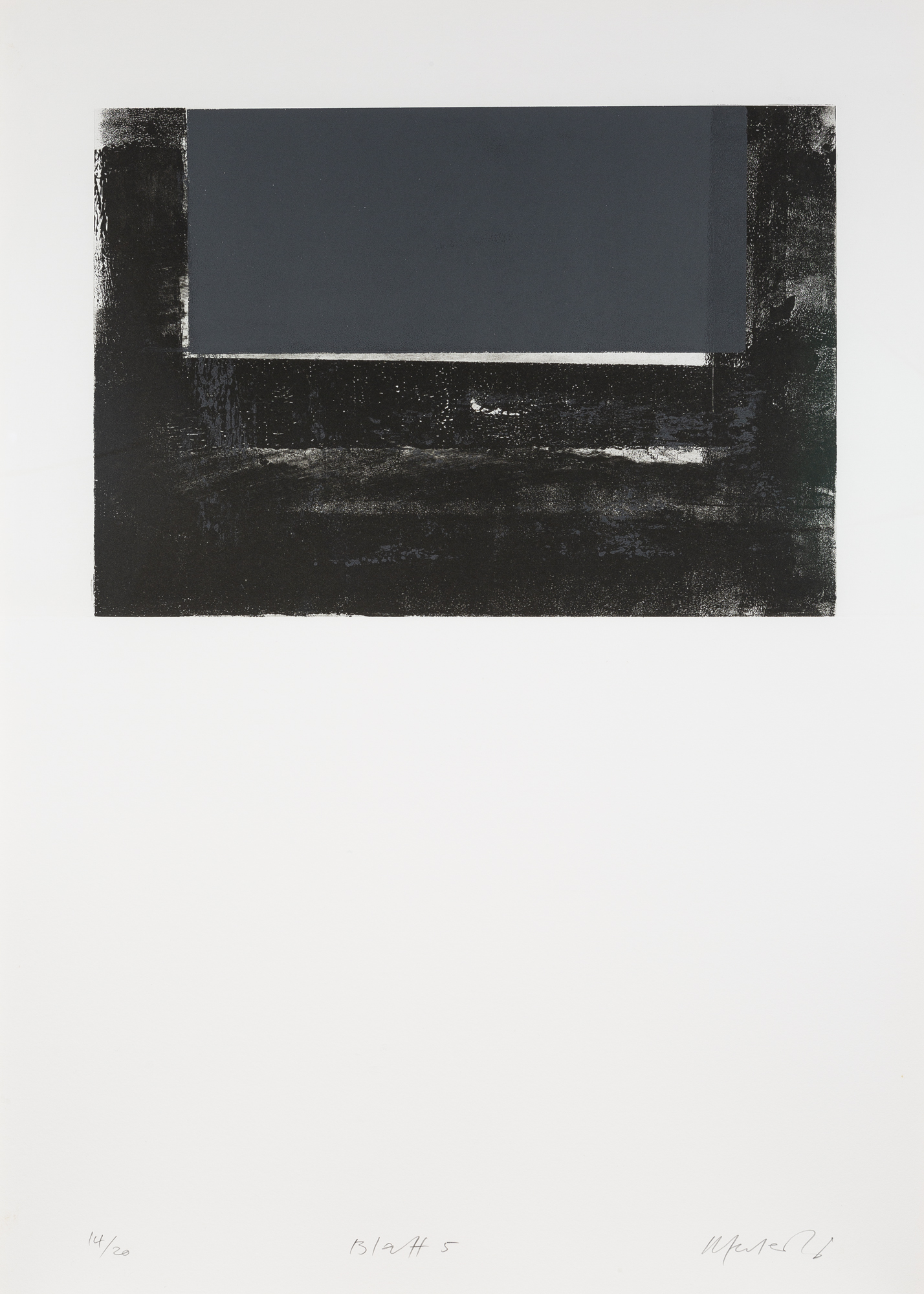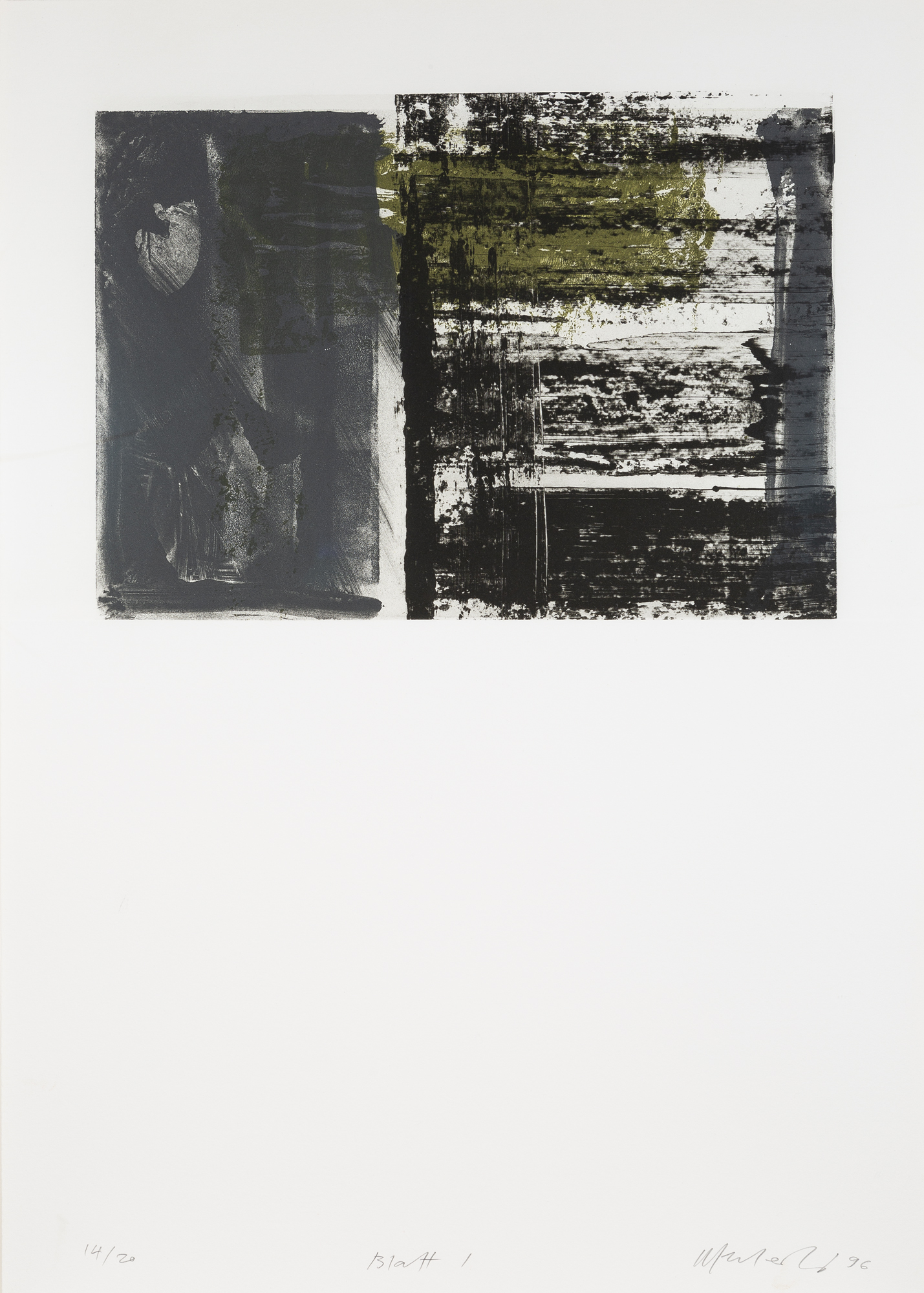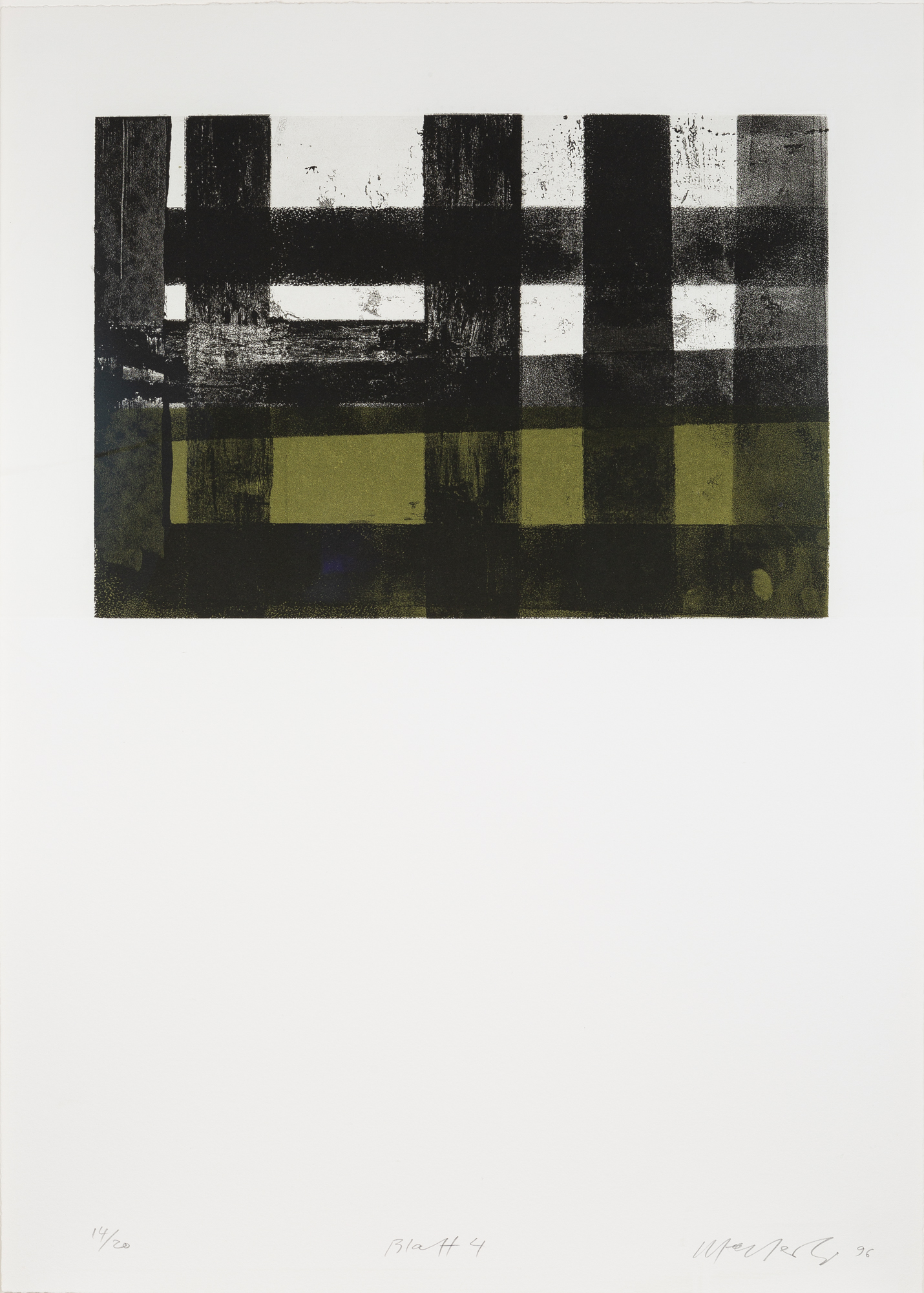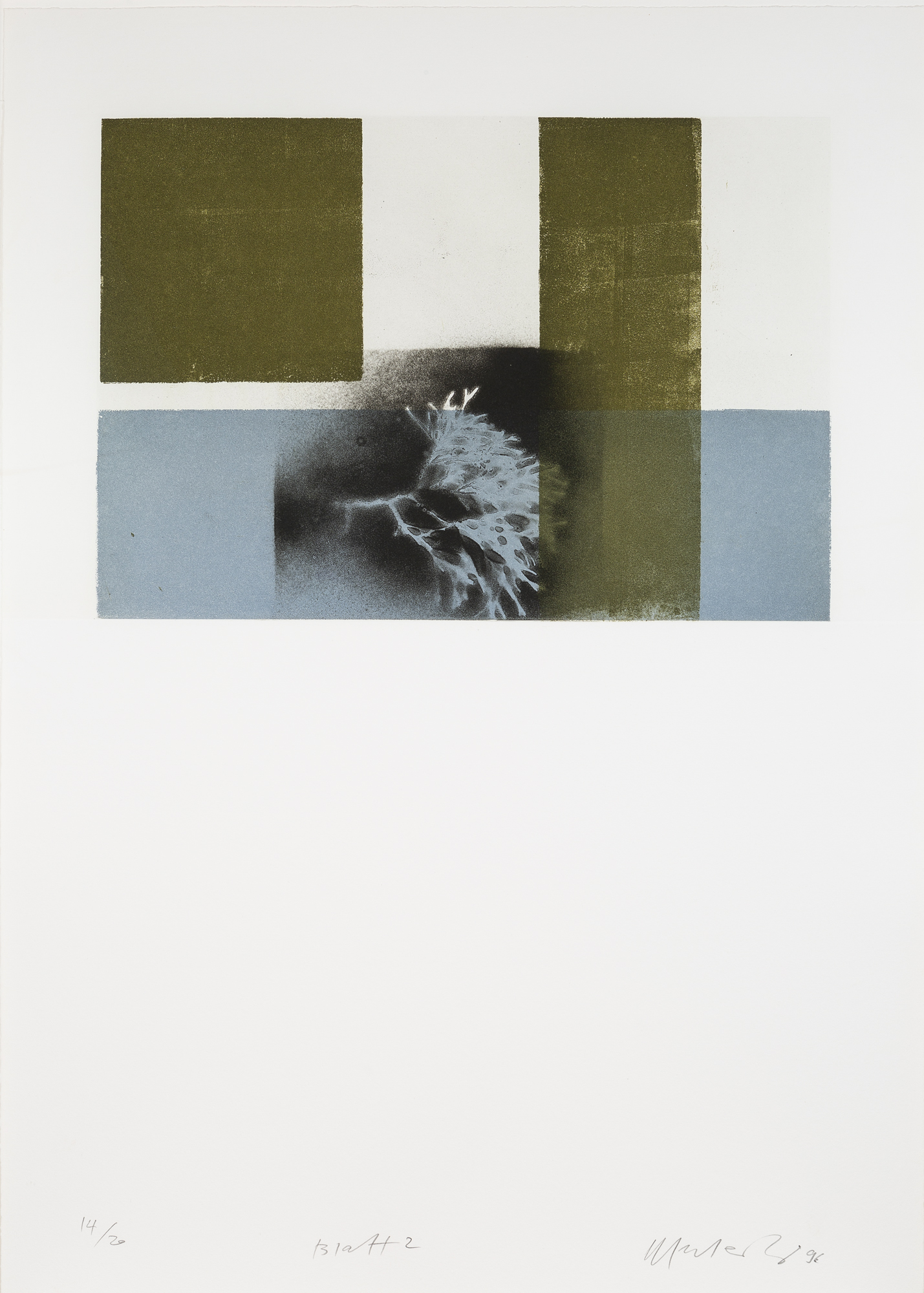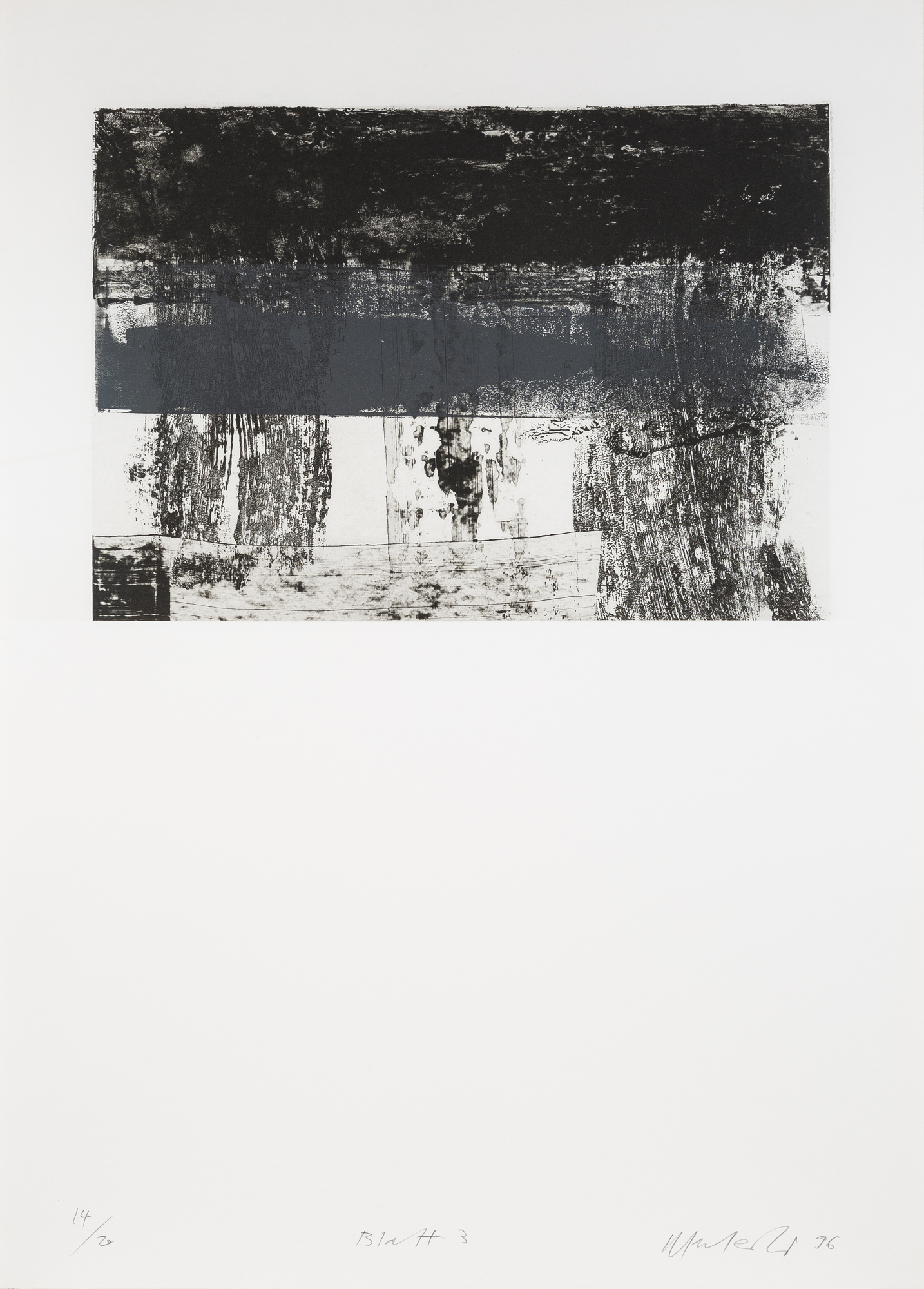Helmut Federle was twenty years old when he moved to Basel to study at the Allgemeine Gewerbeschule. His artistic education was extended by his frequent visits to the city’s Kuntsmuseum. The discovery of works by Mark Rothko, Barnett Newman and Clyfford Still opened up a field of pictorial exploration that he would constantly delve in to.
Affected by the negative reception that greeted his work during an exhibition in Basel in 1979, he decided to leave Switzerland to settle in New York, where he would live until 1983. During these years, his painting became more radical: he abandoned the figuration and highly stylised landscapes of his beginnings, eliminating any allusion to reality in order to engage in a rigorous, monumental and essentially geometric abstraction, which would lead to his work receiving recognition.
He settled in Vienna in 1985, where he has continued to pursue his research into composition, chromatic effects, rhythms, formats and motifs. Grey, green and yellow or violet shades, the dialectic between the horizontal and vertical, and the smooth canvas surface alternating with sometimes expressive strokes have characterised Federle’s oeuvre until today. Building on the formal heritage of the great masters of abstraction, his work also follows on from the mystical quest of Rothko and Newman. Federle’s art is indeed charged with a metaphysical intensity which extends beyond the mere formal qualities of the artwork and invites the onlooker to a meditative introspection.
He has also devoted much of his time to architecture, not only by imagining artworks integrated into buildings (Swiss Embassy in Berlin, Rietberg Museum in Zurich), but also by collaborating in the actual conception of edifices (Novartis laboratory in Basel), or by creating them from scratch (Orleans tramway pavilion). He has worked with some of the greatest contemporary architects, such as Herzog & de Meuron, Adolf Krischanitz, Diener & Diener and Hans Kollhoff.
Affected by the negative reception that greeted his work during an exhibition in Basel in 1979, he decided to leave Switzerland to settle in New York, where he would live until 1983. During these years, his painting became more radical: he abandoned the figuration and highly stylised landscapes of his beginnings, eliminating any allusion to reality in order to engage in a rigorous, monumental and essentially geometric abstraction, which would lead to his work receiving recognition.
He settled in Vienna in 1985, where he has continued to pursue his research into composition, chromatic effects, rhythms, formats and motifs. Grey, green and yellow or violet shades, the dialectic between the horizontal and vertical, and the smooth canvas surface alternating with sometimes expressive strokes have characterised Federle’s oeuvre until today. Building on the formal heritage of the great masters of abstraction, his work also follows on from the mystical quest of Rothko and Newman. Federle’s art is indeed charged with a metaphysical intensity which extends beyond the mere formal qualities of the artwork and invites the onlooker to a meditative introspection.
He has also devoted much of his time to architecture, not only by imagining artworks integrated into buildings (Swiss Embassy in Berlin, Rietberg Museum in Zurich), but also by collaborating in the actual conception of edifices (Novartis laboratory in Basel), or by creating them from scratch (Orleans tramway pavilion). He has worked with some of the greatest contemporary architects, such as Herzog & de Meuron, Adolf Krischanitz, Diener & Diener and Hans Kollhoff.
